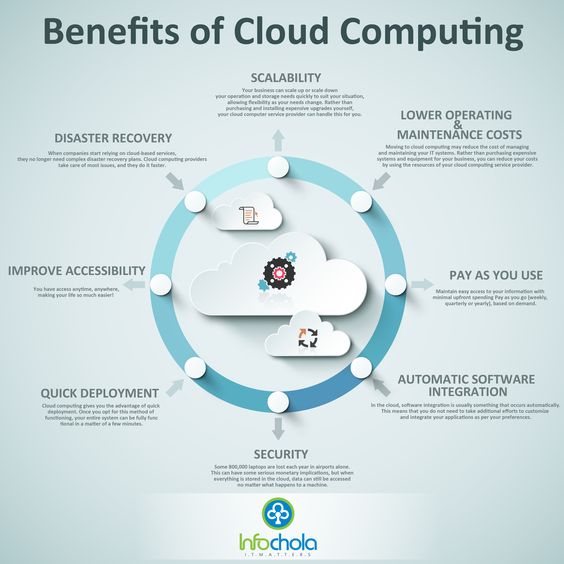Navigating today’s digital landscape, many organizations are embracing multi-cloud strategies to enhance their IT capabilities. But what exactly is a multi-cloud strategy? Simply put, it involves using multiple cloud services from different providers to meet various business needs. This approach is increasingly significant as companies seek flexibility and resilience in their technology stacks.
Understanding Multi-Cloud Strategies
Multi-cloud refers to the use of multiple cloud computing services from different cloud providers. This strategy allows businesses to leverage the strengths of various providers, such as AWS, Google Cloud, and Azure, to create a more robust IT environment. The distinction between multi-cloud and hybrid cloud is crucial. While multi-cloud involves using multiple public cloud services, hybrid cloud combines private and public clouds. Hybrid solutions offer more control over sensitive data by keeping it on private servers while utilizing public clouds for other tasks.
Key Benefits of Multi-Cloud Strategies
A multi-cloud strategy offers several key benefits. Enhanced flexibility is one of the primary advantages, as employing different cloud providers allows businesses to choose services that best meet specific needs. This flexibility enables the customization of solutions to better align with business goals and demands. Improved reliability and redundancy are also significant benefits. By spreading workloads across various cloud platforms, companies reduce the risk of service outages. If one provider experiences an issue, others can maintain operations, ensuring continuous service.
Cost optimization is another advantage. Multi-cloud strategies can lead to cost savings by allowing organizations to select services that offer the best value for each type of workload. It also avoids vendor lock-in, providing leverage to negotiate better terms. Better security and compliance are ensured as different cloud providers offer varied security features and compliance certifications. A multi-cloud approach enables businesses to utilize the most secure and compliant options available for different aspects of their operations. Increased innovation and agility are also promoted, as access to a diverse range of services and tools fosters innovation. Companies can experiment with new technologies and rapidly adapt to changing market conditions without being restricted to a single provider’s ecosystem.
Implementing a Multi-Cloud Strategy
Implementing a multi-cloud strategy involves several steps. Initially, planning and assessment are essential. Start by evaluating organizational needs and current IT infrastructure. Identify which workloads are best suited for different cloud providers and establish clear objectives for the multi-cloud strategy. Choosing the right cloud providers requires assessing their offerings, performance, and compatibility with existing systems. Consider factors like service level agreements (SLAs) and support. Integration and management tools are necessary for facilitating operations across multiple clouds. Utilize tools and platforms that facilitate integration and management, such as cloud management platforms (CMPs), to streamline operations and provide a unified view of resources. Additionally, data migration and synchronization need careful planning and execution. Implement solutions for real-time synchronization to keep data consistent across different cloud environments.
Challenges and Considerations
Challenges associated with multi-cloud strategies include the complexity of management, interoperability issues, data transfer and latency concerns, and security risks. Managing multiple cloud environments can be complex, requiring robust strategies and tools to handle various configurations and ensure seamless operation. Different cloud providers may use varying standards and technologies, potentially causing integration challenges. Ensure that chosen solutions can work together efficiently. Data transfer between clouds can introduce latency and incur costs, impacting performance and budget. Evaluate these impacts and consider solutions to mitigate them. Security risks also arise, as fragmented security policies might be a concern. Implement comprehensive security measures and regularly review policies to address potential vulnerabilities.
Best Practices for Multi-Cloud Implementation
Best practices for multi-cloud implementation include establishing clear objectives for the strategy. Define what you aim to achieve with a multi-cloud strategy; clear goals will guide decision-making and help measure success. Continuously monitor and manage performance using analytics and management tools to optimize resource usage and maintain efficiency. Ensuring data security and compliance involves adopting strong security practices and adhering to relevant regulations across all cloud environments. Regular audits and updates to security protocols are essential. Regularly review and update the strategy to incorporate new technologies and address changing business needs.
Case Studies
Successful multi-cloud implementations are exemplified by organizations like Netflix and General Electric, which have leveraged multi-cloud strategies to enhance their operations. Analyzing these examples provides valuable insights into best practices and common pitfalls. Learning from these real-world applications can guide others in their multi-cloud journeys.
The Future of Multi-Cloud Strategies
As technology advances, emerging trends such as AI-driven management tools and enhanced cloud-native services will shape the future of multi-cloud strategies. Increased adoption is expected as businesses seek more tailored solutions and greater resilience. Future developments will likely include more seamless integration between different cloud platforms and advancements in automation and management tools.
Adopting a multi-cloud strategy offers numerous benefits, including enhanced flexibility, reliability, cost optimization, and increased innovation. By understanding its advantages and challenges, businesses can make informed decisions to build a robust and adaptable IT infrastructure. Embracing multi-cloud strategies can position organizations to thrive in a dynamic and competitive environment.









Leave your reply